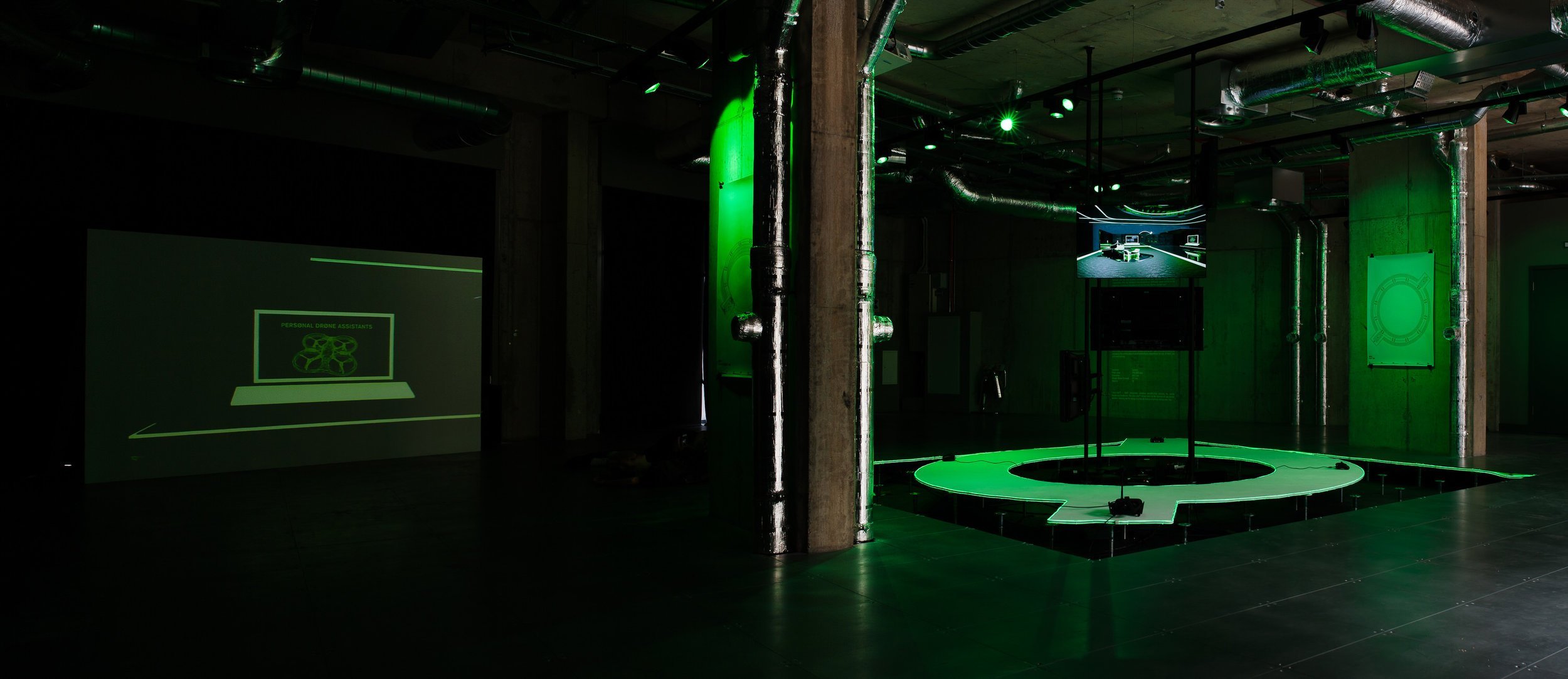
Interface Between Physicality and Virtuality
In the era of digital advancements, our bodies have become conduits for technology, augmenting our capabilities and experiences with varying transportative tools and models.
As we grow increasingly intimate with technology, our relationships with screens, artificial intelligences and machines evolve to reshape our perspectives of the world and assist us in understanding the juxtaposition/symbiosis at play with the physical and virtual.
With heightened intimacy comes increased empathy with technologies; technologies that are being used as testing grounds, sandboxes and virtual possibility machines. This critical play is seen in the symposium with artist David Blandy and writer, curator, and co-director of Strange Attractor Press Jamie Sutcliffe (Areas Of Effect: Planar Systems, Critical Roles, and Gaming Imaginaries, 2023), which looks at tabletop role-play as a transformative activity.
The expression of empathy and understanding of technology from a bodily and immersive perspective was seen in Alan Warburton’s expanded video essay (RGBFAQ, 2020), through large-scale projection mapping and human-proportioned sculptures.

Installation view of RGBFAQ, Alan Warburton, 2020, arebyte Gallery, London. Photo: Max Colson
The language surrounding terms like “cyborgian” is also challenged as our smart devices become permanent appendages of our arms. Other links to this interplay are promoted by embedded wearables and body modifications that extend our sensory perception, allowing us to interact with the world in novel ways, as seen in the works of pioneering artists like Choy Ka Fai (The Choreography of Things, 2014) and Marco Donnarumma (Humane Methods [℧R], 2022). These artists have critically examined the boundaries between humans and machines, and they continue to challenge our understanding of the physical self and the potentialities of integration with machines and hardware.
The expansion of our virtual self and its relation with our physical being propose new forms of intimacy and relations and are exemplified in the works of artists like La Turbo Avedon (Re-Figure Ground, 2019/Club Zero, 2022) and Abi Sheng (FUTURES PAST, 2022), who explore the interplay between the human body and its digital avatar or counterpart.
Immersive and experiential artworks that traverse the physical and virtual realms, such as those created by Lawrence Lek (Nøtel, 2018/FUTURES PAST, 2022), Olia Lialina (Best Effort Network, 2020) and Libby Heaney (The Evolution of Ent-: QX, 2022), further entwine our existence with digital technology.

Installation view of Nøtel, Lawrence Lek, 2018 arebyte Gallery, London. Photo: Luka Radek
Digitisation of Consciousness
Our minds meld with emerging digital technologies such as biotechnology, robotics, blockchains and artificial intelligence, alongside a technology that is more aligned with immaterial, spiritual transcendence and neo-communication. These are technologies of the mind that enhance cognitive abilities, learning, or mental well-being such as neurofeedback, nootropics, meditation and hallucinogens. This can be seen in the work of Zach Blas (CULTUS, 2023) whose work shares belief systems via a techno-religious computational device artificial intelligence is imbued with godly power.

Zach Blas, CULTUS, 2023. arebyte Gallery, London. Image: Max Colson.